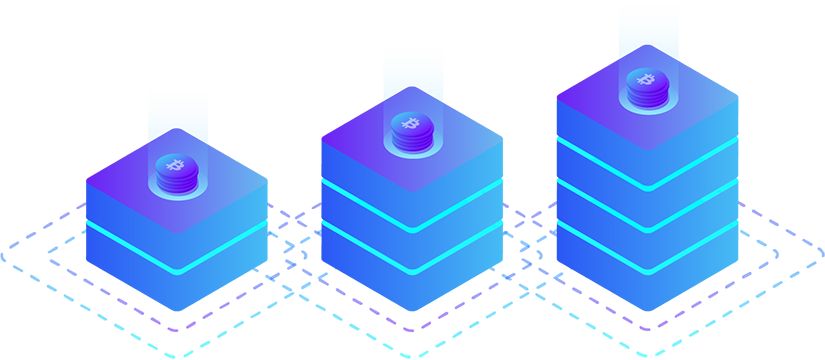
WAL Token, Powering the Future
Decentralized Storage on Sui
As blockchain infrastructure continues to evolve, data storage remains one of the most critical and challenging, layers of Web3. The Walrus Protocol, a decentralized blob storage network built on the Sui blockchain, aims to solve this by offering a scalable, programmable, and incentive driven system for storing and serving large volumes of data.
https://www.walrus.xyz/
At the center of this ecosystem lies WAL, the native token that fuels the entire protocol.
The Walrus Protocol is designed to make decentralized storage practical for real world applications. Unlike traditional storage networks that focus only on replication, Walrus introduces a blob storage architecture, optimized for large binary objects such as media files, AI datasets, and application data.
By leveraging Sui’s Move smart contract language, Walrus transforms storage from a passive utility into an active, programmable component of decentralized applications (dApps). This means data can interact directly with smart contracts a breakthrough that unlocks new design possibilities for Web3 developers.
The protocol’s architecture enables users to pay for storage, reserve capacity, and verify data availability all without operating a dedicated blockchain. Instead, it uses Sui as its coordination and settlement layer.
The WAL token is the economic backbone of the Walrus ecosystem. It ensures that incentives between users, storage nodes, and delegators remain aligned while maintaining network reliability and decentralization.
WAL serves four primary functions:
- Staking and Delegation: Users can delegate WAL to storage nodes, which commit to storing and serving data. Nodes that meet performance standards earn rewards, while those that fail may face penalties or slashing. This system encourages reliability and fairness.
- Payments for Storage: WAL is used to pay for uploading and reserving storage capacity. The protocol’s fee system aims to stabilize storage costs over time, making it practical for developers and enterprises alike.
- Governance: WAL holders can participate in protocol governance voting on parameters such as reward rates, penalties, and technical upgrades. This gives the community a direct voice in the network’s evolution.
- Rewards and Penalties: The protocol employs a balanced reward system that distributes incentives to active, honest participants. Conversely, poorly performing or malicious nodes can lose part of their stake, which may be burned introducing a deflationary element to the token economy.
According to the Walrus documentation, the total supply of WAL is 5 billion tokens.
Distribution is structured to support decentralization and long term sustainability:
- 43% Community Reserve
- 10% User Drop (airdrop and early user rewards)
- 10% Network Subsidies (to bootstrap nodes and adoption)
- 30% Core Contributors
- 7% Investors
An estimated 1.25 billion WAL were circulating around the time of mainnet launch, with the rest subject to scheduled unlocks. Slashing, penalties, and burns are expected to gradually reduce circulating supply over time.
Here’s a simplified overview of how the Walrus ecosystem operates:
- A user or dApp uploads data to the network and pays for storage in WAL.
- Storage nodes receive WAL as a reward for providing reliable data hosting.
- Token holders can delegate WAL to nodes, sharing in the rewards.
- Governance decisions ncluding adjustments to reward parameters are made by WAL holders.
- Nodes that fail to meet requirements are penalized, and part of their stake may be burned, reinforcing network integrity.
Through this circular economy, WAL acts as both the fuel and governance instrument of the protocol.
In a crowded decentralized storage landscape that includes heavyweights like Filecoin, Arweave, and Storj, Walrus differentiates itself through:
- Programmable Storage: Tight integration with Sui’s smart contract layer allows on chain interaction with stored data.
- Efficiency: Advanced erasure coding reduces redundancy and costs without sacrificing reliability.
- Scalability: Blob storage design handles large files more efficiently than traditional replication models.
- Economic Resilience: WAL’s staking and burning mechanisms align incentives for long term network stability.
- Interoperability Goals: Though it launches on Sui, Walrus aims to expand into a multi chain data layer for Web3.
Real-World Use Cases
- Decentralized Applications (dApps): Secure and cost-effective data hosting.
- AI and Machine Learning: Storing large datasets for decentralized AI models.
- NFT Platforms: Hosting high-resolution media and metadata.
- Content Delivery: Decentralized websites and media streaming.
- Blockchain Archiving: Preserving blockchain data snapshots and analytics records.
While Walrus presents a promising model, potential users and investors should consider the following risks:
- Adoption: Sustained token demand depends on developer and enterprise use.
- Competition: Established players in decentralized storage already have market presence.
- Dependency on Sui: Walrus currently relies heavily on Sui’s ecosystem.
- Token Volatility: As with any crypto asset, WAL’s price may fluctuate significantly.
- Network Maturity: The node ecosystem and tooling are still in early stages.
The Walrus Protocol is one of the most technically ambitious projects within the Sui ecosystem. Its goal to create a global, decentralized, programmable storage layer positions it as an essential building block for the next generation of Web3 applications.
If Walrus achieves strong adoption and node participation, the WAL token could evolve into a cornerstone of decentralized data infrastructure, much like Filecoin did for IPFS. With its innovative blend of staking, governance, and programmable storage, Walrus represents a step forward in how blockchain networks handle the world’s growing data demands.
